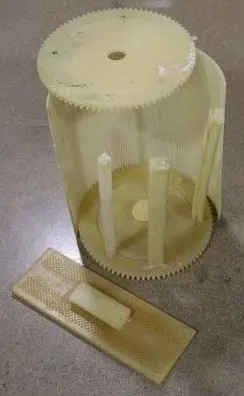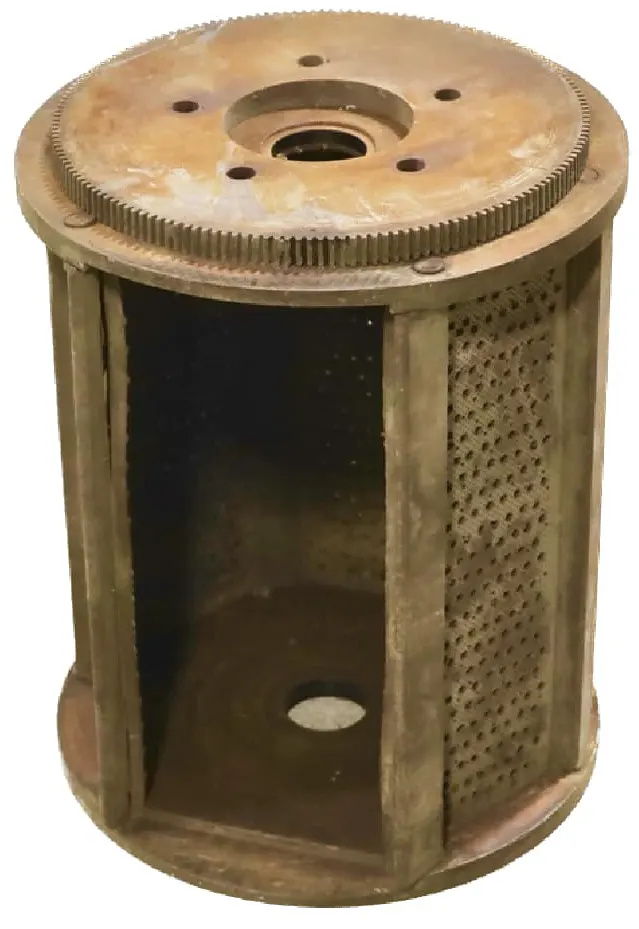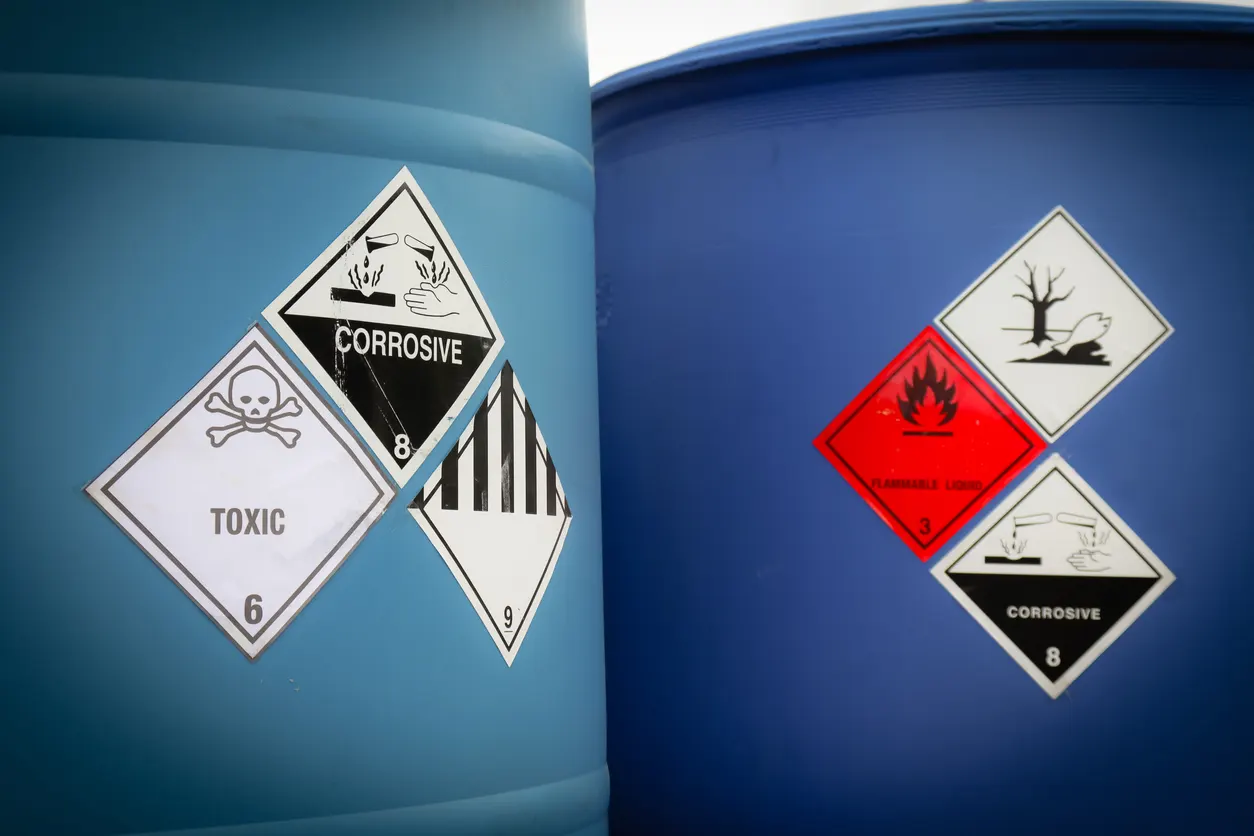The Hidden Costs of Using That Old Plating Barrel
Posted on
In the high-stakes world of the metal plating industry, productivity isn't just important, it's the lifeblood of your operation. There is absolutely no room for downtime, lost product, or the dreaded reworking of parts. Yet, it is common for platers and processers to push their barrel's lifespan to its limit, delaying replacement in an attempt to squeeze every last drop of performance from it. However, delaying barrel replacement invites five perilous consequences: poor plating quality, increased rework, inconsistent plating thickness, chemical contamination, and operator safety risks. In this article, we'll delve into each of these risks, pooling from our rich reservoir of knowledge backed by over two decades of experience in the metal plating industry.
Poor Quality Parts: Time Takes Its Toll
Plating barrels, like any other heavy-duty equipment, wear out or sustain damage over time. Remember, nothing is designed to last for infinite cycles, and this includes your plating equipment. Some material cracks are insidious, hiding internally and escaping detection until the product failure rate begins to increase sharply. For instance, even the finest hand-welded joints on a barrel body are at risk of cracking.

Insider Tip: Some material cracks are insidious, hiding and escaping detection.

Unlike fine wine, whiskey, or cheese, plating barrels do not get better with age. Barrels develop cracks that expand with each cycle. Parts, especially those pesky small ones, can become trapped during processing and rinsing. When this happens the chemical solution cannot flow freely in or out. This lack of free flow of chemical solution is detrimental to the plating quality. When the solution is unable to reach all surfaces of the metal parts, it results in uneven plating. Some areas might receive an excess coating while other areas are too thin. This uneven distribution of plating taints the finished product's appearance, functionality, and durability. Furthermore, trapped parts can contaminate the chemical solution, altering its composition and effectiveness. This could lead to further inconsistent plating results or even cause harm to other parts of the plating process. Also, these trapped parts can cause blockages in the equipment, preventing optimal flow and damaging the system over time.

Did you know? Trapped parts accelerate the growth of cracks during the next cycle. These little stowaways can speed up the wear and tear on your equipment.
We've seen our fair share of worn-out barrels during our many, many (did we mention many?) years in the industry. As seasoned professionals in the metal plating industry, we have seen first-hand the impact of aged and inefficient equipment on production lines. From delayed timelines to increased waste, the cost of not replacing your plating equipment can be staggering. It's a risk that no business can afford to take.
The Rework Slippery Slope: The Price of Neglected Plating Equipment
It is a deceptive calm before a storm when an aging barrel still churns out acceptable products. Initial rejections may seem negligible, but it is a ticking time bomb. As the barrel degrades, rejections multiply exponentially, burdening your operation with costly rework. The expense of rework, stripping, refinishing, and replating can skyrocket to 3 to 6 times the original plating process cost, gnawing at your bottom line. The solution? Timely replacement of your plating equipment.

Plating Uniformity: The Victim of Aged Barrels
In the realm of plating and surface finishing, uniformity is king. Old plating barrels betray this principle, with interrupted fluid flow compromising the even distribution of bath solution and plating thickness. Even our barrels must be replaced over time.
Chemical Contamination: The Stealthy Saboteur
Balancing cleaners, activators, plating solutions, and rinse tanks in a plating line is a tightrope walk. Any trapped fluid from an old barrel becomes an unwelcome intruder in the subsequent process stage, hiking up rinse cycles and time.
Safety: The Silent Stakeholder
With time, the structural integrity of plating barrels erodes, posing a triple threat: risks to worker safety, equipment damage, and environmental hazards. According to industry experts, metal plating equipment should be replaced every 5-10 years. While replacement timing depends on many environmental factors, there is no argument that equipment can become worn out and less effective over time. Worn-out equipment directly leads to safety hazards.
In the plating industry, where robustness and resilience are the cornerstones of operations, worker safety is paramount. Outdated or worn-out equipment poses a threat to your output and jeopardizes the welfare of your team. From minor injuries to major accidents, the risks run high. Replacement is not just about maintaining productivity; it's about protecting the people who make your business possible. Business owners know that this is not merely an ethical obligation; it is a financial one.
Another significant threat posed by outdated plating equipment is environmental. Eroded barrels can lead to dangerous chemical leaks, causing environmental harm and attracting hefty fines. The rule of thumb remains: replace before a catastrophic material failure occurs. Safety is a non-negotiable stakeholder in your operations, and robust, timely replacement of plating barrels is the insurance premium.

Conclusion
Squeezing the last breath out of your antiquated plating equipment might seem like a cost-saving measure, but it's a false economy. The true cost of utilizing outdated plating barrels isn't just the potential for a catastrophic breakdown; it's the continuous, insidious bleed of efficiency. As your equipment ages, its performance declines. This decrease in efficiency translates to higher operating costs, lower production volume, and compromised product quality. You might not see these costs on your balance sheet, but rest assured, they are eating into your bottom line.
The cost of maintaining old plating equipment far outweighs the investment in replacing it. Increased rework cost, compromised plating uniformity, chemical contamination, and safety risks are significant liabilities you cannot afford.
We have seen many parts and challenges during the 20+ years of our manufacturing and design business. If you are looking for a replacement part or an improved design for your replacement barrel, contact us.
